There is nothing more annoying than having an iPhone that keeps resetting itself. It can make your iPhone unusable! Several readers report this particular iPhone keeps rebooting issue following their upgrades to the newest iOS version. iFolks complain about two different types of resetting problems. One, their iPhones restart randomly without any apparent pattern or predictability. One moment they are using their iPhones as normal and in the next moment, bang–it’s suddenly resetting. For others, perhaps more unfortunate iFolk, their iPhones are stuck in a continuous loop of restarting–never making it past the Apple logo screen, just resetting over and over again.
Contents
- 1 Quick Tips
- 2 iPhone Keeps Resetting/Rebooting Itself After iOS 11.x.x Update?
- 3 Battery Check
- 4 Check Your Battery’s Health
- 5 Always Update
- 6 When in Doubt, Use Forced Reset
- 7 Change Date & Time
- 8 Updated Apps?
- 9 Examine Your Charging Port
- 10 Check Some Settings
- 11 Restore Your iPhone From Backup
- 12 Restore to Factory Settings?
- 13 Reader Tips
- 14 Summary
Quick Tips 
Try these tips to fix times when your iPhone keeps resetting itself
- Check your battery level and verify your battery health (for folks using iOS 11.3 and above)
- Set your Date & Time from Set Automatically to Manual
- Try Resetting All Settings on your iPhone
- Use Airplane mode to toggle Cellular off
- Update your iOS to the latest version
- Force restart your iPhone
- Update Apps
- Clean your Lightning Charging Port
- Check Diagnostic & Usage Data
- Restore to factory settings
Related Articles
- iPhone Showing a Black Screen After iOS Update? Fixes
- Check Your iPhone’s Battery Health with iOS 11.3 and above
- Reset Jailbroken iPhone or iPad Using iTunes
- Use DFU Mode to Solve iPhone Problems
- Fix Lightning Port Problems
iPhone Keeps Resetting/Rebooting Itself After iOS 11.x.x Update?
Check out this article for steps on how to troubleshoot this problem in iOS 11.
Battery Check
The iPhone6S seems particularly prone to shutting down even when the battery percentage shows 30% or higher. This particular issue is caused by faulty battery units on the iPhones. However, many other iPhone model users have found similar battery performance issues with their iPhones.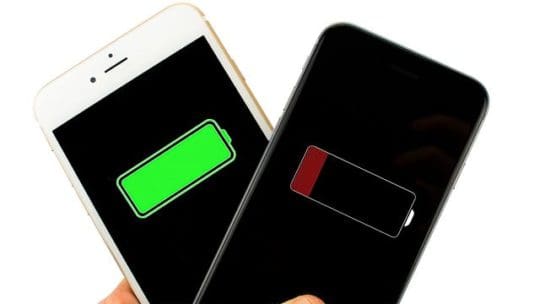
The good news is that Apple is currently replacing batteries for the impacted iPhones. Check Apple support site here to see if your device qualifies for the replacement. If your iPhone model isn’t listed, call Apple Support or set-up an in-person appointment at your local Apple Store. Some readers report Apple replaced their batteries, even when their iPhone model was not listed on the replacement qualifying site.
Check Your Battery’s Health
Sometimes your iDevice gets caught in the reboot loop due to battery health and issues with its peak performance capabilities. Starting in iOS 11.3, Apple pushed out a new battery health feature for iPhones only (at the time of this writing.) This still in-beta feature allows users to check their iPhone’s battery health. Take a look at your iPhone’s battery health by going to Settings > Battery > Battery Health (Beta) and tap it. Look at both Maximum Capacity and more importantly, Peak Performance Capability. See how your iPhone measures up! 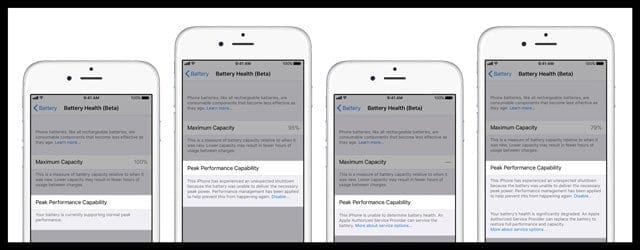
If Peak Performance Capability shows anything other than normal, carefully read the information underneath Peak Performance Capability to learn more about what the battery health check discovered on your particular device. You may learn that your device has turned on performance management, that your iOS is unable to determine battery health, or that your battery’s health is significantly degraded. And it may advise you to replace the battery or seek out additional assistance via Apple Support.
Always Update
This unexpected behavior often happens on your iPhone, iPad, or iPod touch when you use an older version of iOS. So make sure your iPhone runs off the latest version of iOS. It’s easy to check! Head to Settings > General >Software Update. If there’s an update available, go ahead and download and install that new version. See if that solves the problem of your iPhone keeps resetting itself.
When in Doubt, Use Forced Reset 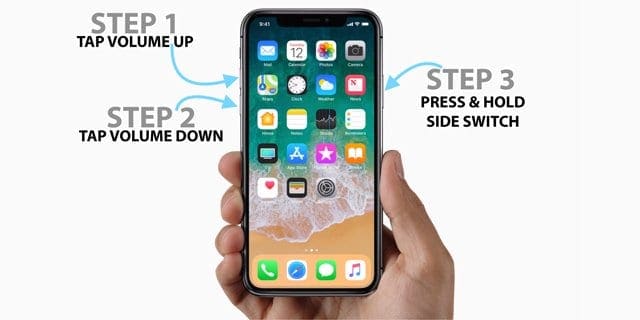
This action is the first thing to do if you are having issues on your iPhone
- For iPhone 6S and below, all iPads, and iPod Touches, press and Hold the Home button and the Sleep/Wake button together for 10 seconds till you see the Apple Logo Appear. Release the buttons and let the device start up on its own
- If you are using an iPhone 7 or 7+, you will need to press the Sleep/Wake button and the Volume down button together till you see the Apple Logo
- For iPhone 8, 8+, and X: Tap (quickly push in & release) the Volume Up button. Then Tap (quickly push in & release) Volume Down button. Press and hold the Side button until you see the Apple logo, then release
Sometimes a forced reset is the most common answer to iPhone problems following an iOS upgrade.
Change Date & Time
Change the Date on your iPhone. Tap on Settings > General > Date & Time. Disable the ‘Set Automatically’ feature and manually set up a time for a date that was in the past. Then, restart your device. Once the reboot issue is resolved, change your date and time settings back to ‘Set Automatically’ 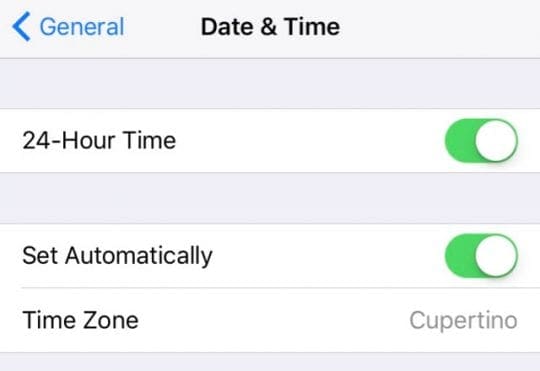
Updated Apps?
The next thing to do is to make sure that all your iOS apps are up to date. If you have any app updates pending, make sure to update these apps and see if it solves your resetting issue. Many of us neglect to update our third-party apps, so make a routine of updating these too.![]()
A recently purchased third-party app often causes this problem. In order to narrow the options, we recommend that you delete the app(s) that you bought or updated recently. We suggest targeting the apps that you installed or updated before the latest iOS upgrade on your iPhone. Try to remember if you installed or updated an app right before your iPhone started this weird behavior. If you’re unsure, take a look at the date you installed the iOS update (Settings >General>Software Update) and note that date. Then open your App Store and check the apps you installed or updated since that time. Remember to include the day you updated your iOS as well. Now, uninstall all those apps OR uninstall them one-by-one and see if that solves your iPhone resetting issues.
If you have already tried the forced reset and app update/delete and still continue to experience the resetting problem, undertake the detailed steps below to fix this issue on your iPhone.
Examine Your Charging Port 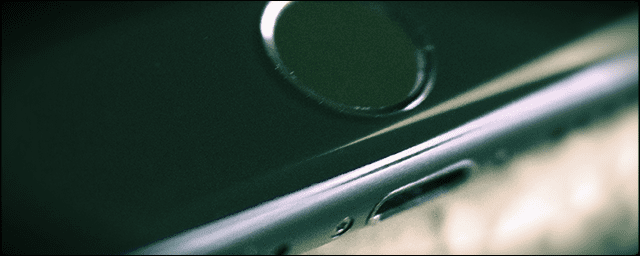
Take a close look at the Lightning charging port on the bottom of your iPhone. Look and see if any dirt, dust, or debris is stuck inside the port. If so, try giving your Lightning port a good cleaning! That may fix your problems. And remember to remove any case before you examine and clean any port on your iPhone, including headphone jacks and charging ports.
Check Some Settings
![]()
Check Settings
- Go to Settings > Privacy > Scroll Down to Diagnostics & Usage> Tap Diagnostic & Usage Data. Take a look and see if any of your apps show up multiple times. If so, uninstall that app. Check and see if that fixed the problem.
- Go to Settings > General > Reset > Reset All Settings. Enter your passcode if requested. This action resets all your iPhone’s back to factory defaults, but you do not lose any of your data or your apps. However, you do need to enter your WiFi information and password again.
Restore Your iPhone From Backup
The first thing to try is to restore your iPhone from your backup. We hope that you take the time to do regular backups for your iDevice. Backups are essential especially when you are faced with problems like this.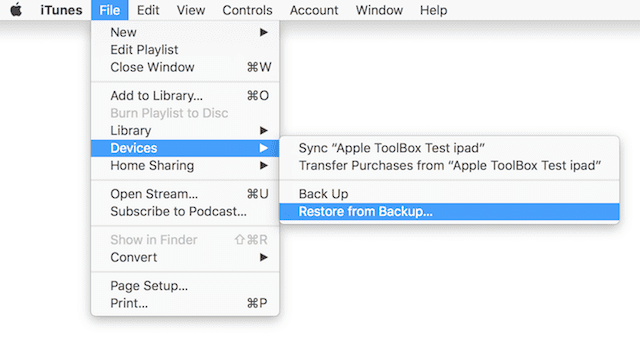
Restoring from Backup is very easy although it sounds technical. Follow the steps below to restore your iPhone using your backup.
- Connect your iPhone to your computer running iTunes. Make sure that you are using the latest version of iTunes on your computer.
- Confirm ‘Trust this computer’ if the message appears on your iPhone
- Click on Restore Backup
- Choose the backup you want to restore your iPhone from the list of backups.
- Click Restore and let the process complete on your iPhone
- Once your iPhone has synced, you can disconnect it from your computer and test it out.
Consider performing a DFU Restore, especially if your iPhone is experiencing this problem frequently and repeatedly.
How to Backup with Design in Mind
If you are not sure about how to backup your iPhone or iPad, just follow the steps in the article below. You’ll learn how to quickly back up all your iDevices. The tips also provide you with a good backup strategy; when to backup, how frequently and how to create multiple backups.
At a bare minimum, we recommend that you take a backup into your iCloud so that you can access your data. This is for those readers who do not use iTunes for their backups.
Who’s Afraid of losing their iPhone Data, Guide to Backups
Once you have completed the backup of your iPhone, it will give you the peace of mind before you perform a factory setting on the device. There is a chance that you will lose your old archives messages from your iPhone when you do a clean install. There are many third-party apps out there such as iBackupBot that help you recover your old SMS and archived messages when you do a clean install on your iPhone.
Restore to Factory Settings?
Unexpected restarting is often caused by software, hardware, or content. If the previous solutions failed to remedy your iPhone unexpectedly restarting, the next recommendation is to reinstalling iOS and restoring your iDevice to factory settings completely. Although this might sound alarming, you should be ok if you back up your iPhone before resetting it to Factory mode. You don’t want to lose any valuable content so it’s important to backup first. By backing up, you retrieve all your content.
Please note that if you are an Apple Watch user, the watch data backups that you may have on your iPhone will not be recovered if you do a clean install as opposed to restoring from your backup.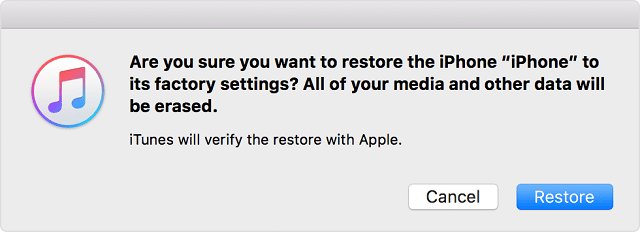
Follow the steps below to reset your iPhone into Factory Settings
- Tap on Settings > Apple ID Profile > iCloud and Turn off ‘Find my iPhone.’
- Connect your iPhone to your computer using the USB Cable. Make sure you are running the latest version of iTunes
- Select your iPhone in iTunes
- Click on ‘Restore iPhone.’ Click Restore again so that iTunes can clean your iPhone and install the latest iOS
- Your iPhone will restart after the restore has completed.
- Now that your iPhone has a clean install, you can restore from a backup to bring back your personal data back onto your iPhone.
- Remember to go back and turn on your “Find my iPhone” in your iCloud Setting.
The steps above although time-consuming are helpful when you have a bug in your iOS install. Most of the times, restoring using a backup tackles majority of the problems including this issue where your iPhone keeps resetting itself.
Reader Tips 
- One reader turned LTE off for a few hours, then turned it back on, and the iPhone restarting stopped
- Another user’s new iPhone was restarting itself randomly, and she noticed that immediately following the reboot, her iPhone opened the Instagram app. After uninstalling Instagram, the restarting problem disappeared. After several days of no restarts, she reinstalled Instagram with no further issues
Summary
At this point, if your iPhone is still stuck in a restarting loop, it’s time to contact Apple Support. Make an appointment with a Genius at your local Apple Store or contact a support team member via email, phone, or chat. The chances are that if nothing worked, your iPhone needs a repair. Hopefully, your iPhone is still covered under AppleCare+. If not, make an appointment anyway so Apple can diagnose what’s going on. And then you choose to fix it via Apple, a third-party service provider, or not at all.
Please be aware that there were some model specific issues with iPhones where the resetting problem was more prevalent than other models. If you have an iPhone 6 plus and experience this issue, we suggest that you reach out to Apple Support and chat with them about this problem.